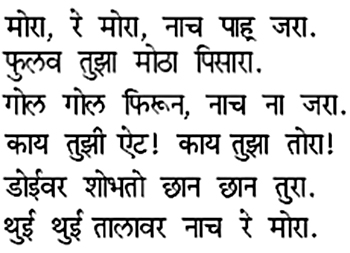 In the Gupta Empire, Sanskrit language received its classical shape. The Aryan language was Sanskrit and showed similarity to Homeric Greek, Latin and other languages of Europe. The Dravidian language was not related to any known speech. Each of these had their literature and the Tamil language, for example, does not fall behind Sanskrit literature in richness. This language has now been permeated by the Sanskrit language.
In the Gupta Empire, Sanskrit language received its classical shape. The Aryan language was Sanskrit and showed similarity to Homeric Greek, Latin and other languages of Europe. The Dravidian language was not related to any known speech. Each of these had their literature and the Tamil language, for example, does not fall behind Sanskrit literature in richness. This language has now been permeated by the Sanskrit language.
Development of Sanskrit language
Sanskrit language has passed through three stages, old India, Middle India and Modern India. Old Indian is Vedic and is similar to the language Avesta, the sacred language of the old Iranians. Vedic language is not a homogeneous language and do shows signs of foreign influence. This language gradually changed in the post-Vedic period. In the mid of fifth century B.C. it was codified by the celebrated grammarian Panini. It became the Sanskrit language. Sanskrit was not the language of the common masses. The upper classes could speak the language properly. By the side of Vedic and Sanskrit, there developed prakriti languages, which matured in the post epic period. Pali language is the ecclesiastical language of the Buddhists of Ceylon, Burma.
Development of Other Languages
 Besides Sanskrit, the Prakrit language had developed which are the earlier forms of Indian Vernaculars. They differed phonetically from Sanskrit as there is no harsh combination of consonants. For example Sanskrit `sutra` and `Dharma,` appear in `Prakrit,` as `Sutta` and `Dharma.` Of other `Prakrit the important types were Sauraseni, spoken round Mathura, Ardha- Magadhi, spoken in Oudh and Bundelkhand, Magadhi language, spoken in modern Bihar and Maharashtra.
Besides Sanskrit, the Prakrit language had developed which are the earlier forms of Indian Vernaculars. They differed phonetically from Sanskrit as there is no harsh combination of consonants. For example Sanskrit `sutra` and `Dharma,` appear in `Prakrit,` as `Sutta` and `Dharma.` Of other `Prakrit the important types were Sauraseni, spoken round Mathura, Ardha- Magadhi, spoken in Oudh and Bundelkhand, Magadhi language, spoken in modern Bihar and Maharashtra.
The last stage of the `Prakrit` was known as `literary Apabhramsh.` When the Prakrit language came to be used as literary language, the Indian grammarians began to apply the term `Apabhramsh`. It was used for literary purposes, and the modern vernaculars are the direct descendants of these `Apabhramsh.` From the Apabhramsh of Sauraseni languages like Punjabi, Western Hindi, Rajasthani and Gujarati were derived. From the `Apabhramsh` of Ardha Magadhi descended Eastern Hindi. Kashmiri and Lahada has also been derived from Apabhramsh and from Vrachada was derived the language of Sindhi. Maharashtri gave Marathi language and Magadhi blossomed into Bihari, Oriya and Bengali. These were the main developments in the linguistic history of India.
It is true that Sanskrit became dominant during the Gupta period but it was a language of the elite. As a result other languages like Prakrit gained superiority during the Gupta era. However gradually it was believed that Prakrit is the language of the lower strata of the society and Sanskrit should be used by those who were set in the powerful positions of the society. Another important feature of the Gupta period with regard to language was that it was closely linked with status and gender.



















